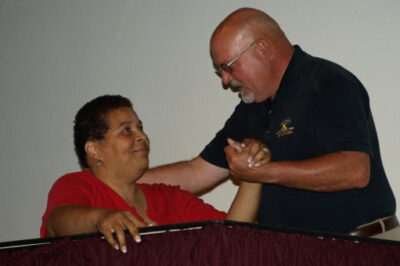We love teaching our kids how to pitch, catch, hit and tackle, but what about teaching your children how to approach issues that divide?
Unfortunately, we have reached the middle of the second decade of this new millennium no closer to agreement—and possibly farther away—when it comes to public conversations about race, politics, religion and pretty much every issue where we draw ideological lines in the sand and, sometimes, point fingers to advance our own narrow views.
So how do we raise our kids—regardless of race—to truthfully evaluate the assumptions, the generalizations and the judgments that so many people seem to carry around? There are creative ways to approach the potential for conflict that can lead to greater mutual understanding and facilitate growth.
We can change the culture in the world we inhabit: our families, workplaces, schools, and communities. The best place to start is teaching your children how to approach issues that divide people:
Sign Them Up for Debate Club
Learning how to argue both sides of an issue gives respect and understanding for those with differing viewpoints. If there’s not a handy debate club, make it a game at home. Assign issues where you find yourself tending to be divisive. Teach open, spirited dialogue by modeling it yourself. [Tweet This]
Reach Out to People You Dislike
One All Pro Dad required his children to invite home a classmate they had bullied. After walking home together with a parent, enjoying supervised playtime, having dinner as a family and riding back to his home in the car, they realized they all had more in common than they suspected. The next play date was voluntary. A week later, they were friends.
Respect Individuality and Diversity
As parents, its important that we model respect for people as individuals. America is the original safe haven for diversity. It’s one of the values that makes this nation great. Home is a powerful classroom, and our children learn most of their assumptions, prejudices, and intolerance from us. Lead some dinner table conversations about people who are “different” and ideas that rub you the wrong way.
Active Listening
Teach your kids active listening skills. This involves—among other things—eye contact, nodding, refraining from organizing a rebuttal while the other person is talking, and paraphrasing what has been said to make sure you heard correctly. If our kids become known as active listeners, they will become natural leaders in bringing people together.
Look for the Good
Train your kids to note strengths in opposing points of view, to advocate what they are for rather than what they are against, and look for common areas of agreement. Rather than weakening their own convictions, looking for common ground serves to increase the likelihood of constructive dialogue and reduce the incidence of conflict.
Sound Off: What do you think it takes to have a constructive conversation with someone you disagree with strongly? Huddle up with your kids and ask, “How does it feel when you disagree with someone?”
Related Resource: “10 Things You Need to Teach Your Kids About Politics“
© 2015 All Pro Dad. All Rights Reserved. Family First, All Pro Dad, iMOM, and Family Minute with Mark Merrill are registered trademarks. Used with permission.








Leave a Comment
You must be logged in to post a comment.